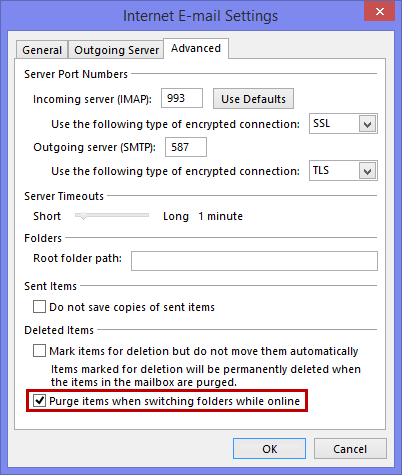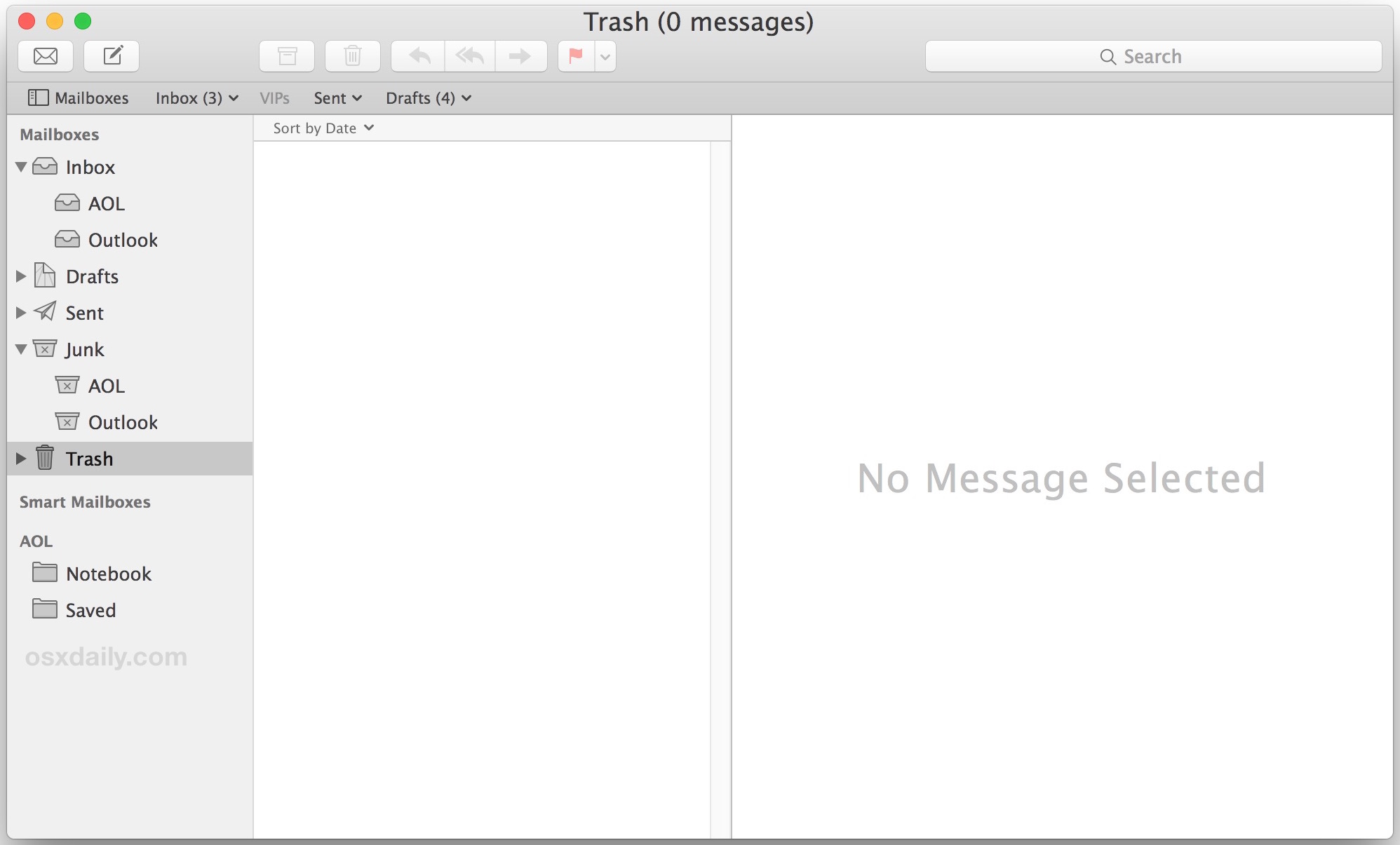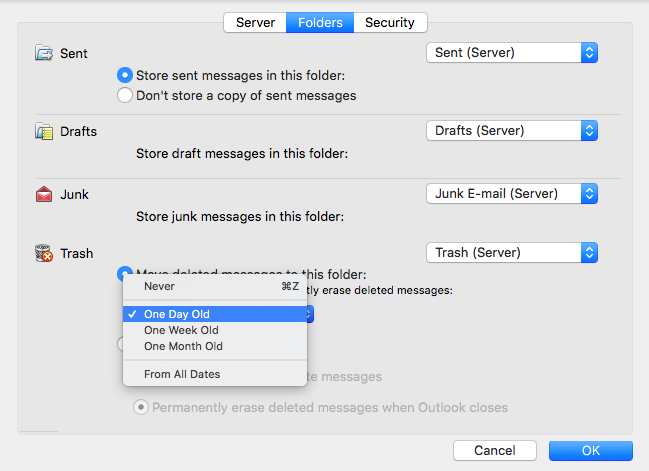

- Outlook for mac 2016 set up service to mark all deleted emails as read how to#
- Outlook for mac 2016 set up service to mark all deleted emails as read archive#
- Outlook for mac 2016 set up service to mark all deleted emails as read code#
- Outlook for mac 2016 set up service to mark all deleted emails as read windows#
Set oFolder = Session.GetDefaultFolder(olFolder Calendar) If you accidentally hid a folder such as Calendar, Inbox or want to unhide any other folder, just change this line: You can repeat this by selecting any other folder, than going back to the “Microsoft Visual Basic for Applications” window and run the script again, until all these useless outlook folders are gone.
Outlook for mac 2016 set up service to mark all deleted emails as read how to#
How to run the script? Easy – see that “Run” feature on the menu… it’s this one here: Run the script and the folder will disappear. IMPORTANT: If you have any other folder selected such as ‘Inbox’, it will dissapear! Now select the folder you want to delete on Outlook. This is how it should look like on your end:
Outlook for mac 2016 set up service to mark all deleted emails as read code#
Now put this code in there: Option Explicitĭim PropName, Value, FolderType As String Here, let me show you:Ī new window should appear on the left side.

That’s your salvation!Īll you have to do now is to go to “Microsoft Outlook Objects”, press right mouse button, then go to “Insert” and then “Module”. Select the Mark items as read when viewed in the Reading Pane check box, and then type a number in the Wait n seconds before marking item as read box. On the Tools menu, click Options, and then click the Other tab.
Outlook for mac 2016 set up service to mark all deleted emails as read windows#
If a security warning pops up called “Microsoft Outlook Security Notice”, just press “Enable Macros” to continue.Ī new windows should open up called “Microsoft Visual Basic for Applications” that should look like this – don’t be scared. Automatically mark messages as read in the Reading Pane. If there is no such menu, you have to activate it: File/Options/Customize Ribbon/Main Tabs/Developer. On the Developer tab find and click Visual Basic. If a user sets permission levels only to allow free/busy or free/busy limited details, an Outlook Mac user will not be able to see any details of the shared calendar. Alt F11 doesn’t work on Outlook 365 anymore, you have to do these steps instead: Important: Outlook 20 Mac users must be granted 'Reviewer' access to another person's calendar to be able open that calendar and view details. Open the Visual Basic Editor (older Outlook versions: press ALT+F11). Now you are going to write a script but don’t worry. I mean, who uses RSS Feeds nowadays – that was 15 years ago – gosh!

Yes, click the folder you want to make disappear. Step 2: Click on the useless Outlook folder
Outlook for mac 2016 set up service to mark all deleted emails as read archive#
Once you create the folders you need, just drag-and-drop emails into your PST file, and they will move to your new archive wherever you created it.Go to the File at the menu and click at “Options”, then go to “Trust Center”, click “Trust Center Settings”, in there click “Macro Settings” and select “Notification for all macros” like this:

To do this (or create any folder, for that matter), just right-click the new PST folder and Click New Folder. Personally, I like to add the Inbox and Sent Items folders to begin archiving old emails from my online Mailbox into my PST archive. With the PST file created, Outlook automatically adds it to your Profile on the left side of the Home Tab. I like to store the file in my OneDrive Folder to keep it synced up with my other laptops. TIP: By default, Outlook 2016 stores PST files in the C:\Users\USER\Documents\Outlook Files folder. Give your PST Outlook data file a name and click OK. Open Outlook 2016 and Click the Home tab > New Items > More Items > Outlook Data File. How to Create an Outlook Data File (.PST) Archive File in Outlook 2016 The process is very similar to previous versions of Outlook – follow the screenshots below to get started.


 0 kommentar(er)
0 kommentar(er)
